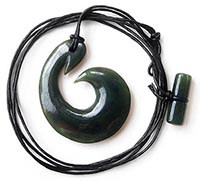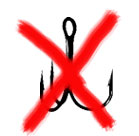

Despite all the hype around soft-plastic baits, fishing with bait is still the most popular method of salt water fishing. But buying a block of frozen fish deemed not fit for human consumption to use to attract fish that should be, is not going to optimise your chances of success.
The days of whacking a hunk of any old bait on a hook and tossing it over the side and catching fish are long gone. Oh, sure you may luck out and park above a school of fish determined to take a trip to your fry pan - but not often.
Don't get me wrong, fish do get caught on frozen baits, especially purpose caught baitfish such as pilchards and skipjack tuna.But much of the fish frozen for bait is by-catch, as tough as old boots, and is probably as palatable. Many people use these tough baits because they are tough and they stay on the hook longer. It stops pickers stealing the bait.
If pickers are plaguing you and your baits are being scoffed before a decent fish can get hold of your bait try going up in bait size, way up. And cast this bigger bait further back in the 'berley trail' (Berley, Ground bait, or Chum - same thing different name.) Bigger fish often hold back, below and further down the trail than smaller fish.
There is a simple rule for bait-fishing - the better the quality of your bait, the better quality of fish you are likely to catch.
(Article continues below advertisement)
Bait caught on the fishing ground tends to be the baitfish your prey is chasing, and this makes your bait just that much more attractive than imported bait. Freshly killed bait still retains the oils, blood, and other attractions to your prey.

Any of the baitfish mainstays - yellowtail, koheru, sprats, piper, etc. caught at the fishing site and used freshly killed will be very seductive.
If the size is suitable the bait can be used whole - or if too big, cut up. If cutting up these baits remember to cut across the fish at an angle from head to tail to expose as much of the flesh as possible.

If you are chasing big snapper, try a 'butterflied' bait. From the tail, cut up each side of the backbone, to just behind the head, then cut out the backbone behind the head.
This leaves two fillets still attached to the head. Hook the bait between the eyes and fire it out. If the bait is still alive when you turn it into a butterfly, so much the better.
Fillets of freshly caught fish such as kahawai and trevally also make very attractive baits. When freshly caught the flesh is still firm, and will stay on a hook much better than when it has been frozen. Try cutting the flesh into strips, rather than cubes, this will give the bait some added movement in the water.
If the kahawai you are using for bait is freshly killed, take off a fillet, skin it, cut the bait into strips, and rig it with a two-hook rig, wrapping the line between the hooks around the bait strip. This bait-rig has accounted for many large snapper.
The gills of freshly caught bigger baits such as kahawai, trevally, slimy mackerel, are top baits. Push the hook through the pea-sized knurl at the top of the gills and send it down. Do not fish gills for much longer than ten minutes without a bite or hook-up, the blood will have leeched out, taking with it the reason for fish to bite.
(Article continues below advertisement)
Try and keep the bait alive if you can, from the point of capture to the fishing ground. Fresh killed bait will still be attractive even if it does not match what your prey is feeding on.
If you cannot keep the bait alive make sure it is kept as cool as possible maybe in a bag on the ice you are taking out to keep your catch in tip-top condition.
It is imperative to keep caught bait either alive or as cold as possible. Keeping dead baits in a container of water is a bad practice. This will actually speed up the process of raising the fish's temperature, and turn the flesh into mush.
You can use any of the bait rigging techniques outlined above for baits caught on the way to the spot .
Choose frozen bait using much the same judgement factors you would use if you were planning to eat the fish yourself.
Fish that has been well cared for up to and including being frozen will look better in the pack. The fish will still be bright.
Any bait that looks lifeless in the pack will probably appear so under the water as well. It is essential that frozen bait should retain the oils and juices that make it attractive to our prey.
Bait that looks flat in the pack has probably been left too long before freezing and it is likely that oils and juices have dissipated.
It is for this reason that frozen bait should not be allowed to totally unfreeze before use.
As bait unfreezes, much of the oil and juices leech out. A quick look in the bottom of a bait-bin or bucket at the end of a fishing session will prove this.
Keep most of the bait you have taken out for the trip as cold as possible and only put enough bait on the bait-board to cater for immediate needs.
Many frozen baits such as skipjack tuna and pilchards turn into a soft mush when unfrozen a mush that is difficult to rig onto a hook a mush that fish can easily pull off a hook.
The best condition for frozen bait is a texture something like the balsa wood or polystyrene foam.
It is likely that fish have very little means of detecting hot or cold, in terms of food, so bait that is still partly frozen is no problem.
I can only think of one bait that is probably best used after freezing, and that is skipjack. Fresh caught skipjack is very soft and it is difficult to keep it on a hook. But in saying that, skipjack that is allowed to totally defrost becomes next to useless. Try and keep a skipjack out of the sun between baiting up.
(Article continues below advertisement)
When you look at bait in the retailer's freezer - and don't buy bait till you get a look at it - look for the following key points before selecting bait:
To be successful in catching more or bigger fish means starting at the fish's end of the process:
Everything else that follows up the fishing system hook, line, rod, reel, and angler is of no use unless the first three factors are in place. Bait selection and presentation is too often relegated to a quick trip to a bait-freezer on the way to a fishing trip

Article written by Tony Bishop

What you need to know about fishing hooks
Why so many hook types, sizes, and shapes?
You wander into the tackle shop to buy some hooks, and there in front of you is a huge array of sizes and variations. Confused? Don't be, help is at hand.
Anchoring - when "close enough" isn't.

Most times I guard my spot 'Xs' with more diligence than most, but I am less concerned about revealing the location of some spots than some others. The reason is very simple, most fishermen will not spend the time and trouble anchoring in just the right spot.
Anchoring in this context is a two part activity. Anchoring the boat is the first and critical part, and "anchoring" the bait is the second, and just as critical part. But the second part is entirely dependent on the first.
Milly & Ted's Big Day Out Fishing

They'd ‘had words’. Their faces and body language told the story, even to a casual observer.
Onlookers, and there were a good few of us, studied clouds to see if we could find faces in them, or did a detailed inspection of our shoe laces to make sure they remained tied, trying to stifle laughter.
How to Release Fish with the Best Chance of Survival

Don't be fooled, just unhooking a fish and throwing it back in the water is not going to ensure a fish will survive the catch and release.
Releasing fish correctly has become a very important factor in preserving fish stocks for the future, but it needs to be done correctly.
This article sets out 5 "release rules" that provide the maximum survivability for the fish. There is also a couple of extra 'rules' and links to more information.
